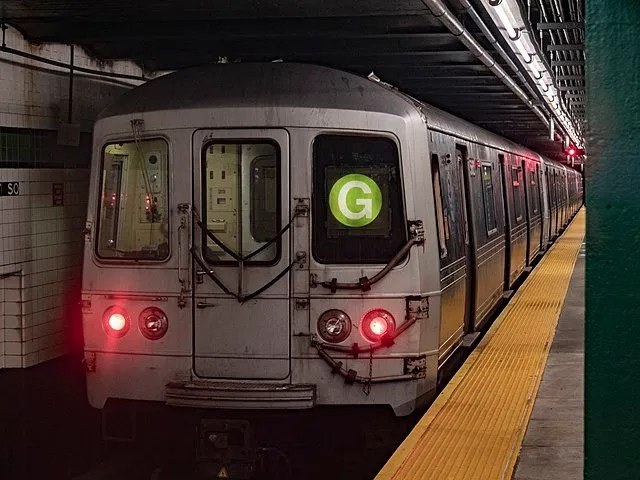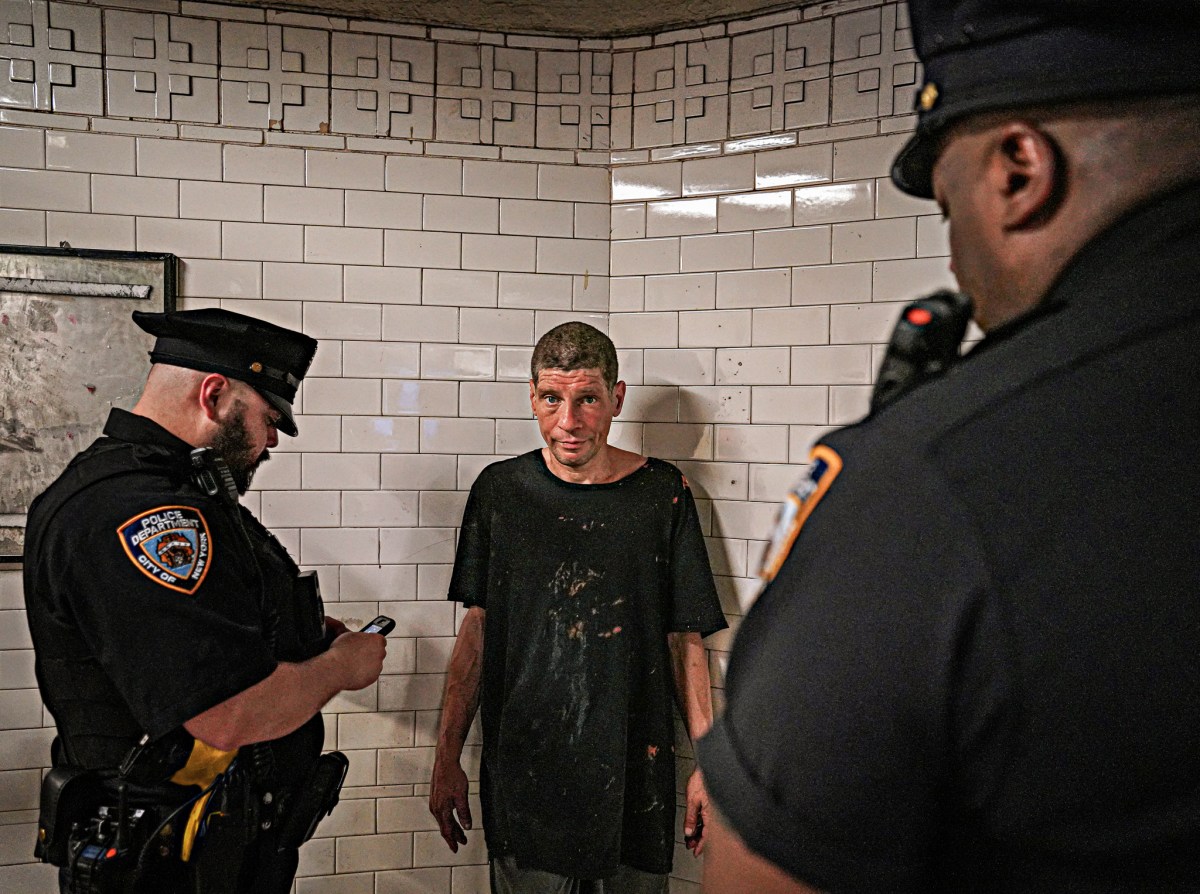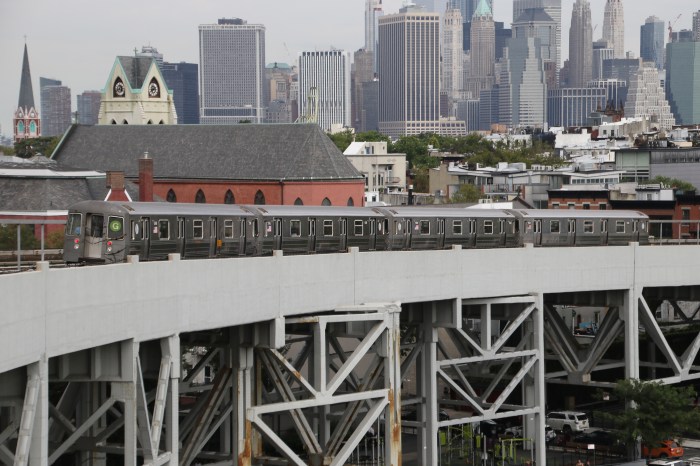G train commuters are preparing for a tough summer as the MTA prepares to shut down the Crosstown Line in three phases starting at the end of this month.
The first phase of the shutdown will last from June 28 through July 5, from Court Square in Long Island City to Nassau Avenue in Greenpoint. After that, the G will shut down from July 5 through Aug. 12 between Court Square and Bedford-Nostrand Avenues in Bedford-Stuyvesant. Finally, from Aug. 12 to Sept. 2, there will be no G service between Bedford-Nostrand and Church Avenue in Kensington.
“The G train is our lifeline, and for 6 weeks this summer it’s gonna be shut down,” said local City Council Member Lincoln Restler. “And that’s just gonna be a huge pain in the you-know-what for everybody.”
The shutdown will be particularly tough for residents of Greenpoint, where the G is the sole subway line. Neighborhood residents packed a May 30 town hall on with elected officials and representatives of the MTA and New York City Department of Transportation to express their frustration.
Shutting down a subway line is no small undertaking, and the MTA isn’t doing it without justification. The transit agency is spending hundreds of millions of dollars to replace the line’s Great Depression-era train signals with modern Communication-Based Train Control, which allows the system to run trains closer together at shorter intervals — meaning, by extension, trains will run faster.
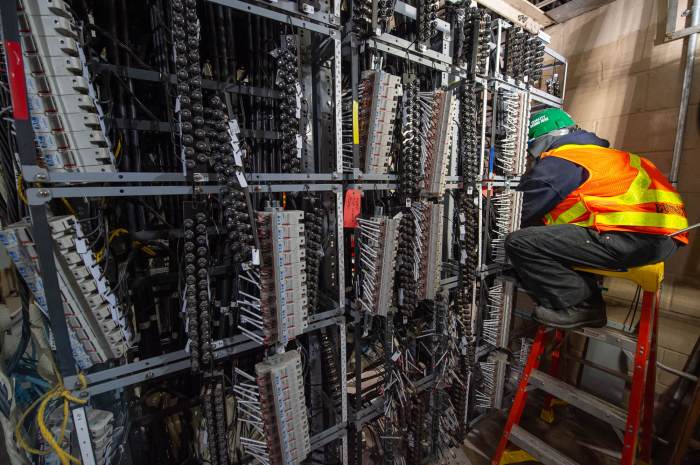
On the L and 7, the only lines where CBTC installation is complete, service reliability has skyrocketed in the years since implementation.
“The one silver lining I would say here is the CBTC technology they are installing while the shutdown is happening is a major positive development for the G line,” said Restler. “And it will hopefully, in the not distant future, lead to more efficient service, more reliable service, even more frequent service.”
The work is not expected to be totally complete until 2027, but MTA officials opted to pursue 24/7 shutdowns this summer in what was described as a bid to save money and reduce complications. The biggest crunch point is the installation of six new switches to replace the 1930s-era devices at interlockings, said Sean Fitzpatrick, deputy chief of staff to MTA Construction & Development, because it will require changing the track geometry — or the rail positioning — of the line.
“It’s very, very hard to do that sort of a little bit at a time,” Fitzpatrick said at the town hall. “And so for that reason, we’re gonna get the work all done this summer to make sure that we’re not stopping and starting and inconveniencing folks for a very, very long time.”
The MTA will run free shuttle bus service in the interim, at intervals of up to 4 minutes during the day on weekends to as infrequently as every 10 minutes overnight on weekends.
And the MTA and city are also attempting to ensure parking scofflaws don’t keep people from where they need to go. The DOT is planning on installing new curbside bus stops, daylighting intersections to prevent illegal parking, and installing new commercial loading zones on key blocks. NYPD parking enforcement will also be enhanced on the shuttle bus corridor.
Furthermore, the B62 bus, whose route largely mirrors the G, is set to be one of the first buses with Automated Camera Enforcement, the MTA’s expanded bus lane ticketing system. Buses will now automatically write tickets to motorists double parked or parked in bus stops.
“We know how essential the G is to communities like Greenpoint but throughout the entire length of the G,” said Fitzpatrick. “We will be providing frequent and reliable shuttle service as a replacement.”
Busway push in Greenpoint
Still, several attendees of the town hall found the shuttle bus plans inadequate in addressing the scope of the impact the G shutdown will have on communities along its corridor, especially in Greenpoint.
“Obviously there’s been a lot of work that’s gone into this, but it is absolutely insufficient for the amount of disruption that Greenpoint is going to face with this shutdown,” said an attendee named Kevin. “If the city was shutting down the [Brooklyn-Queens Expressway] for 10 weeks through Brooklyn, there would be a lot more than some daylighting for bus turns and left-hand turn mitigation. It would be an all-hands-on-deck situation, it would be an emergency situation.”
Local pols and transit advocates have called on the city to consider installing a bus lane or a busway along the route, but say they’ve made little headway on that with the city DOT, which controls the usage of city streets.
Christopher Hrones, director of transit planning and policy at DOT, said the agency is considering, at least temporarily, new bus lanes on DeKalb and Lafayette avenues. But for busy Manhattan Avenue, underneath which the G runs in Greenpoint, that is not on the table.
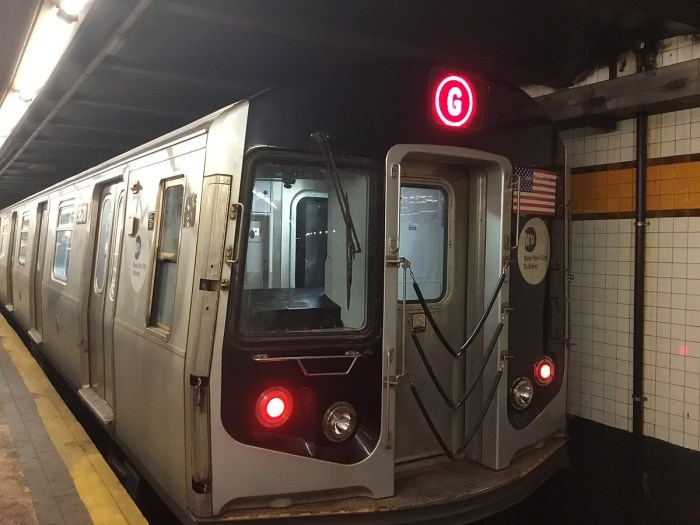
“On Manhattan Avenue specifically, which is what we’re focusing on tonight, we do not believe bus lanes are feasible,” said Hrones. “It’s a narrow street, there’s simply not enough room to have bus lanes on portions of it.”
Furthermore, the temporary nature of the shutdown means that the amount of work DOT would put into planning for diversions would all be for naught by the end of the summer, said Hrones.
“We have a unique situation here because we have a — I know it feels like forever for the people who have to deal with it, but it is a temporary situation here with the G train shuttle during the summer,” said Hrones.
The agencies have also apparently done little to address a potential boom in cycling during the shutdown. While Fitzpatrick said the MTA is working with Citi Bike on better rebalancing for bikes at Greenpoint docks, Hrones said DOT would “look into” adding new bike parking around subway stops and building new protected bike lanes, but made no promises, noting it is a “lengthy process” to get those approved.
“I think it’s just critical for us to express that the community is so deeply unhappy with what’s presented,” said an attendee named Kylie. “I assume you guys aren’t gonna be the ones on these buses twice a day, every day, for six weeks.”
This story first appeared on Brooklyn Paper’s sister site amNewYork Metro.


